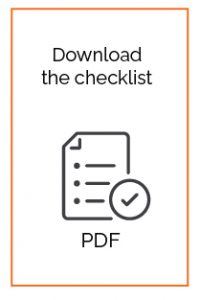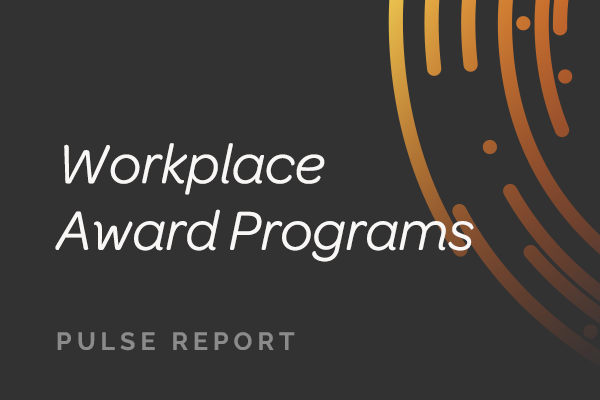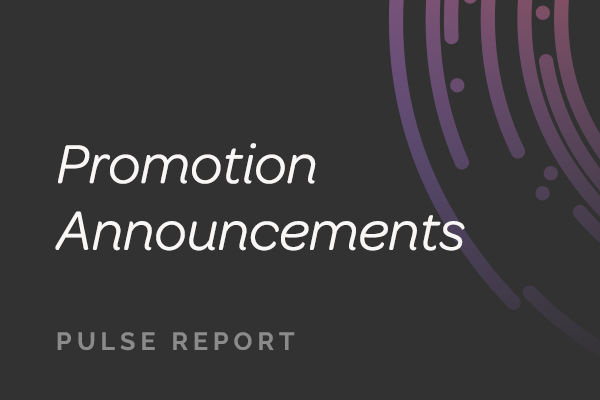

 Are you keeping your leadership team highly visible?
Are you keeping your leadership team highly visible?
Now more than ever, employees need to hear from leaders – a lot. Several times a week is strongly recommended. There is currently no risk of overcommunicating. Emails are a good start, but if your company’s infrastructure and bandwidth can handle live video, that’s even better. Regular posts on your company’s social channels are a bonus. Seeing leaders and hearing their voices can help reassure employees that someone is capably steering the ship.
Best practice:
Given the move to a completely virtual environment, one of our clients hosted a virtual All Hands for all employees, led by the CEO; another client invited the Chief Security Officer to attend functional All Hands to answer questions in a smaller forum; one CEO is hosting live Ask Me Anything sessions to stay visible with employees.
 Have you ramped up support for your managers?
Have you ramped up support for your managers?
Managers can’t help their teams stay calm and focused if they are personally struggling, too. Take care of your people managers, so they can be effective in leading their teams. This calls for much more than just a toolkit. Help managers ramp up their resiliency skills. Then keep them regularly briefed on the latest plans, equip them to guide remote teams, and host resources on a central manager portal.
Best practice:
One of our clients regularly holds manager-only calls to allow managers to surface key issues and questions before they communicate with their employees. Another client released a manager playbook with specific guidance on leading remote teams. Yet another client prescribed that all managers hold a daily morning 10-minute “stand-up” video call with their teams, both to check in and to help provide some structure to the workday for employees not used to working from home.
 Are you proactively addressing panic and fear?
Are you proactively addressing panic and fear?
It’s natural for employees to feel anxious and fearful in times of uncertainty. To break through the stress, keep communications simple and prescriptive. Provide step-by-step instructions whenever possible and zero in on things employees can control. Avoid emotionally-charged words that may inadvertently induce stress. Provide regular updates on leadership meetings, policies and decisions, so employees have confidence that there’s a plan in place.
Best practice:
One CEO is hosting virtual small group gatherings via Zoom, where employees can personally check in, share how they’re doing, and stay connected.
 Are you enabling employees to stay connected?
Are you enabling employees to stay connected?
As this situation persists into the coming weeks and months, be prepared for feelings of isolation among employees to set in. Ensure senior leaders continue with regular all hands meetings and front-line managers maintain their weekly staff meetings. Provide clear guidance on collaboration tools and chat platforms, and emphasize the use of video cameras during virtual meetings. When communicating about updated company policies and decisions, tie messaging back to the organization’s culture and values whenever possible. Launch company-wide virtual engagement efforts to keep people connected to the company and one another, such as virtual CEO or leader breakfasts, virtual coffee talks, or team pizza parties.
Best practice:
One of our clients set up a channel for employees to share their work-from-home environment in all its glory—kids and pets included. Another client is rolling out a fun “Social Distancing Wellness Challenge,” encouraging employees to stay active in their home environments, post photos, and enter a contest to win prizes.
 Do you know how your employees are faring?
Do you know how your employees are faring?
As with any communication strategy, understanding your audience is essential. Now is the time to increase your measurement efforts, not stop them. Be sure you have a process for monitoring employee sentiment to stay on top of hot spots and emerging concerns. If you don’t already have two-way channels, now is the time to set one up.
Best practice:
One of our tech clients is considering a weekly pulse, asking a few simple questions about what’s working, what’s not, and what employees need.
 Do you have a communication control tower in place?
Do you have a communication control tower in place?
With things changing on a daily basis, a disciplined and rigorous communication governing body is essential. Outline a simple process, ensure clear roles for each player, and commit to moving fast. Set up a centralized place for coronavirus content. An established Frequently Asked Questions (FAQ) process is critical during a crisis. This includes a methodology for tracking incoming questions from employees, quickly funneling to pre-assigned subject matter experts, identifying key themes, and writing, updating, approving, and posting FAQs.
Best practice:
Many of our clients are holding daily check-in calls with an extended team to ensure communication is tightly coordinated across HR, Security, PR, Facilities, Sales, and other key functions. Another client has established a robust FAQ process, with questions triaged and answered daily. Another has instituted increased global control over regional messaging to ensure consistency of messages and appropriateness of tone.
 Do employees feel supported as they adjust to working virtually?
Do employees feel supported as they adjust to working virtually?
Not everyone has a home environment suitable for working remotely. Daycare and school closures are impacting even the most productive virtual workers. Review your company’s guidelines for working from home to be sure expectations are realistic, given the current situation. Leaders should acknowledge that employees are dealing with a less-than-optimal work-at-home environment and make it clear that it’s ok if kids or pets appear in the background on a video call. Provide guidance to employees on working virtually, whether it’s ensuring they establish a daily routine or block time on their calendar to manage home responsibilities.
Best practice:
One of our tech clients set up a Yammer group where employees share what they’re doing as they adjust to working from home. Another created a guide specifically to help employees who are working from home with children, along with a companion piece called “A Guide to Working with People Who Are Working from Home with Children.”
 Have you revisited your editorial strategy and calendar?
Have you revisited your editorial strategy and calendar?
Communications about the coronavirus currently dominate your company’s channels, pushing business and product news out of the queue. This may be appropriate today, but what about two weeks from now? Determine when and how you will begin weaving “business as usual” content back into your editorial planning. Communicate criteria to leaders and other stakeholders and carefully strategize appropriate timing for a shift in content.
Best practice:
Many of our clients are looking ahead and adjusting their editorial strategies now. One is adding an acknowledgment of the current realities of coronavirus to business-as-usual articles rather than diving straight into the content.
 Are you keeping an eye on productivity?
Are you keeping an eye on productivity?
During times of stress and anxiety, employees need to feel productive. They want to know that they are contributing, even during this difficult time. Now is the time for leaders to review current business strategies, prioritize projects, and postpone initiatives that can be delayed.
Best practice:
A tech client is asking all line managers to revisit each employee’s objectives, focus people on outcomes, not activities, and be as specific as possible on what’s expected by when.
 Are you enabling employees to do good in their local communities?
Are you enabling employees to do good in their local communities?
One of the best ways to thrive during times of stress is to focus on helping others. This is a great opportunity to reemphasize the company commitment to social responsibility and involve employees in volunteer efforts, particularly in relation to this crisis. Employees are concerned about their local communities and others in need. Local food banks and senior meal deliveries, deemed as essential services, are in dire need of volunteers.
Best practice:
One organization is allowing employees who are working from home to expense two meals/week if purchased from and delivered by a locally owned restaurant, in an effort to support the local community.
 Do your leaders recognize this as a defining moment for engagement and loyalty?
Do your leaders recognize this as a defining moment for engagement and loyalty?
Advise your leaders about the lasting legacy that they will leave as a result of this crisis. Did they demonstrate calm and supportive leadership? Did they treat employees, partners and customers with compassion? How leaders make employees feel at this very moment in time will be long remembered and will have a significant impact on long term engagement, loyalty, and retention.
Best practice:
Several of our clients’ CEOs have called for leaders and front-line managers to demonstrate extreme empathy and flexibility with their teams. Hearing this mandate from the top led employees to have renewed appreciation for their employers.
Where to turn for help
Know that the ROI team is here to help you during this time. Please reach out if you need support with your crisis communication strategy or messaging.
Contributors:
Catherine Forman
Vice President
With a deep expertise in change management and employee engagement, Catherine helps manage largescale, complex strategic projects for our clients. As an avid rock climber, Catherine approaches her work as she does her climbing - always with an eye on the next move. Her expertise has made her a valuable contributor to ROI since 2003.
Lesli Gee
Executive Vice President
A founding member of ROI, Lesli is an expert at change management and HR comms expert with more than two decades helping executives design and execute large-scale change initiatives to strengthen organizational culture, streamline processes and improve performance. A 27-time marathon runner and charity fundraiser, she has helped numerous Fortune 500 companies achieve their business goals.





